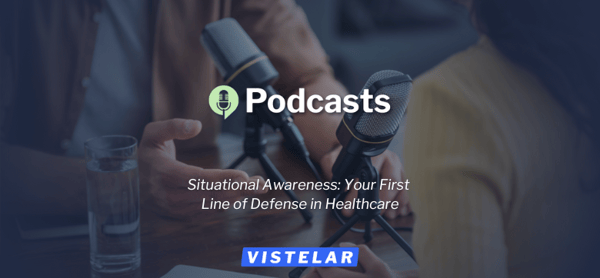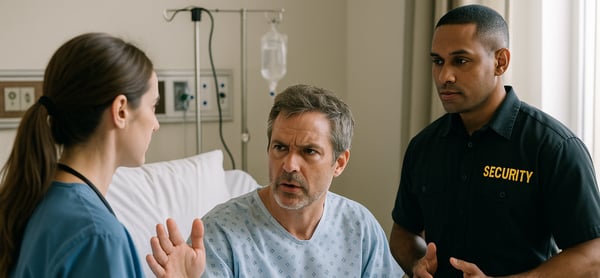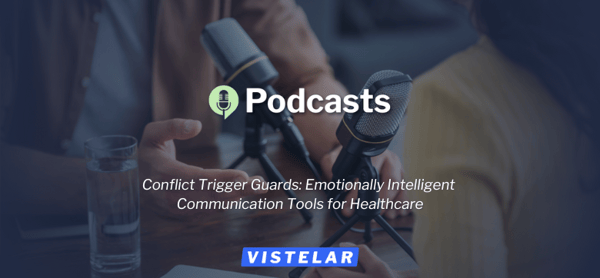Healthcare organizations invest heavily in regulatory compliance training—from annual workplace violence prevention modules to harassment awareness courses. Administrators track completion rates, verify documentation, and prepare for surveys with meticulously maintained records. When regulators visit, these training programs provide evidence of "reasonable efforts" to address workplace safety...
Blog Posts of Vistelar Team
Vistelar is a licensing, training, and consulting institute focused on helping organizations improve safety through a systematic approach to workplace conflict management. Our Unified Conflict Management System™ uses easy-to-learn and trauma-responsive tactics — based on over four decades of real-world experience and frequent enhancements — to empower teams to identify, prevent, and mitigate all types of conflict, from simple disputes to physical violence.
This content was created in part with the assistance of AI tools to support research and content drafting. It has been reviewed and edited by our team to ensure accuracy and alignment with our values. AI-generated content should not be considered a substitute for professional advice or human judgment.
Situational Awareness: Your First Line of Defense in Healthcare—Podcast
“Situational Awareness: Your First Line of Defense in Healthcare" — Episode 33
Co-host: Marcus—former healthcare security director
Co-host: Natalie—nurse practitioner and clinical team leader
Subscribe to our podcast on Apple Podcasts
The ROI of Respect: How Culture Impacts Operational Outcomes
In healthcare's data-driven environment, leaders constantly evaluate return on investment for clinical initiatives, technological implementations, and operational changes. ROI calculations influence everything from capital expenditures to staffing models. Yet when it comes to the culture of respect within an organization, many leaders rely on intuition rather than metrics, assuming that while...
How Much is Conflict Costing You?
Healthcare leaders track countless financial metrics—from length of stay and operating margins to supply costs and reimbursement rates. Yet one of the largest cost drivers in healthcare remains largely unmeasured and unmanaged: workplace conflict.
When 'Nonviolent' Isn't Enough: Redefining the De-escalation Standard
Healthcare organizations have embraced de-escalation training as a cornerstone of workplace violence prevention. These programs typically aim to prevent physical aggression through verbal and non-verbal techniques that calm agitated individuals. Success is often defined simply: if no one gets hurt, the de-escalation is deemed successful.
Incident Reporting Isn't Enough: What Your Team Isn't Telling You
Healthcare organizations rely heavily on incident reporting systems to identify and address safety concerns, including workplace violence. These systems typically capture serious events like physical assaults, sexual harassment, or explicit threats. Organizations track these reports, analyze trends, and implement targeted interventions based on the resulting data.
But what about all the events...
Conflict Trigger Guards: Emotionally Intelligent Communication Tools for Healthcare
“Conflict Trigger Guards: Emotionally Intelligent Communication Tools for Healthcare" — Episode 32
Co-host: Marcus—former healthcare security director
Co-host: Natalie—nurse practitioner and clinical team leader
Subscribe to our podcast on Apple Podcasts
Verbal Triage: A Necessary Step in Violence Prevention
In healthcare environments where resources are limited and demands are high, triage represents a fundamental organizing principle. Clinical triage sorts patients based on acuity to ensure appropriate resource allocation. Yet when it comes to violence prevention, many healthcare organizations lack a systematic approach to early assessment and intervention. The result is reactive rather than...
What's Missing from Your Safety Drills?
Healthcare organizations conduct regular safety drills to prepare for emergencies ranging from fires and natural disasters to active shooters and mass casualty events. These drills typically focus on logistics, protocols, and technical procedures—evacuating patients, establishing command centers, allocating resources, and coordinating with external agencies.
Three Seconds to Diffuse a Threat: The Power of First Contact
In a healthcare setting, the first three seconds of an interaction often determine whether a situation will escalate or stabilize. This critical window—from the moment a provider enters a room, approaches a distressed visitor, or addresses an agitated patient—sets the tone for everything that follows. Getting these first moments right can diffuse potential threats before they materialize;...












